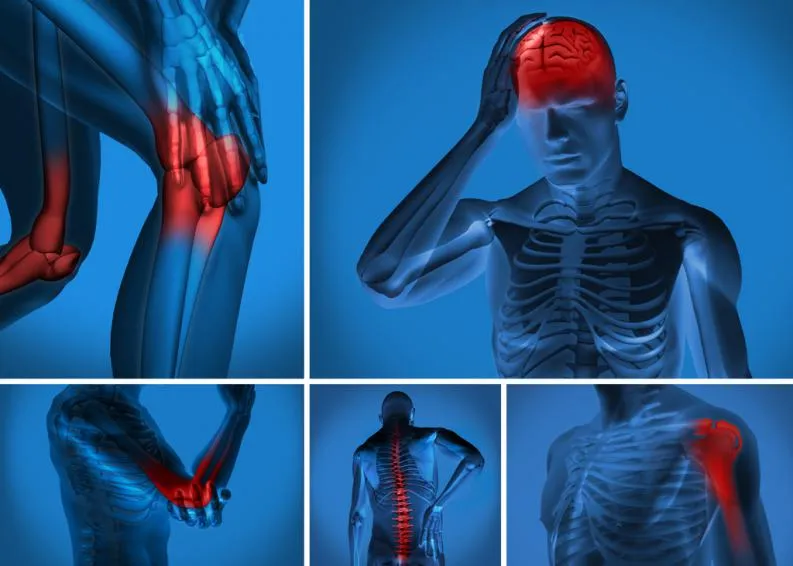The pain linked to diabetes is difficult to treat due to the low effectiveness of neuropathic pain options.
It has been widely assumed that the chronic pain experienced by a number of diabetes patients originates from the damage to blood vessels or the local tissue that surrounds neurons caused by high blood sugar levels.
However, a new study informs that, in experimental models, this hypersensitivity to pain is, instead, the altered signaling of insulin in the sensory neurons of pain.
Chronic pain is a frequent complication of diabetes, with evaluations that report rates from 20 to more than 60 percent of people with diabetes who also have to deal with hypersensitivity to pain, intense pain and/or numbness that hinders self -controlof his illness.The symptoms generally begin with a sensation of tingling in the distal limbs, extending to cover all the hands and the lower part of the legs as the severity of pain increases.
Pain linked to diabetes is difficult to treat due to the low effectiveness of neuropathic pain options and because alternative treatment options such as massage, bathroom or exercise result at different levels of pain relief between pain betweenpeople.The most important thing is that available treatments simply improve symptoms instead of providing a lasting cure.
The underlying causes of diabetes induced pain are still greatly unknown.To date, most studies have used vertebrate models such as rodents to focus on how diabetes could affect the tissue that surrounds sensory neurons, with a possible impact on the function of neurons.However, a broader investigation has not yet been carried out on whether other tissues could be linked to the development of pain symptoms associated with the disease.
The predominant current theory is that diabetes related pain is a side effect of vascular changes or the toxicity of high levels of sugar in neurons.Now, a new research published in the magazine ‘Disease Models & AMP;Mechanisms ’instead implies the altered signage of insulin in the sensory neurons of pain, through the use of a novel fly model.
The leaders of the study team, Dr. Seol Hee IM and Dr. Michael Galko, from the MD Anderson Cancer Center of the University of Texas, in the United States, explain that “only very recently the researchers began to pay attention to the loss of loss ofInsulin signaling in pain neurons. ”And they add: "This is a gap that our work has helped to complete: Drosophila's model has allowed the specific manipulation of insulin signaling tissue and measure the subsequent effects on pain sensitivity."
Fruit flies have been used for several years as a model organism for many aspects of diabetes research, including studies on molecular mechanisms behind the maintenance of balanced glucose levels and insulin production and sensitivity.In addition, they have been used to model other complications associated with diabetes, such as heart -induced heart disease and metabolic syndromes.
The pain model associated with diabetes described in this research document is an extension of the research models and analysis of the fruit diabetes of the fruit well established to measure pain in flip larvae.The crucial questions raised in this new investigation are whether hypersensitivityTo the pain experienced by people with diabetes is linked to the defects in the signaling of insulin in sensory neurons, and if this pain can be modeled in fruit flies.
To answer these questions, the research team used three different models of fruit flies;one with a genetic interruption of insulin signaling and two established models of type 1 diabetes fly and type 2. In the first model, scientists destroyed a key protein of insulin signaling in specific tissues and were surprised to discover that the protein of the proteinInsulin receptor worked in sensory neurons of pain instead of metabolic tissues such as muscle and fat.
In these neurons, the defective function of the insulin receptor causes hyper-action of neurons and persistent pain.In addition, both in the genetic model blocked and in the type 2 diabetes model, the equipment was able to reverse pain hypersensitivity by increasing insulin signage in sensory neurons.
According to IM and Galko doctors, the key involvement of this discovery in the field of diabetes investigation is that it is the simple loss of insulin signage in the sensory neurons of pain that leads to the development of persistent pain.This opens the doors for future research on how to restore insulin signaling within sensory neurons of pain as a potential treatment for patients with diabetic neuropathy.
In the future, the team plans to combine specific genetic scrubbing with the type 2 diabetes model to find out what genes are necessary to maintain persistent hypersensitivity in pain neurons of pain.IM and GALKO doctors say: “These screenings can be of a genetic or chemical nature and can be performed in our genetic or specific insulin receptors models.We can also expand our analysis to other sensory modalities, such as cold or mechanical and chemical stimuli, since patients with diabetes also experience these hypersensibilities. ”



